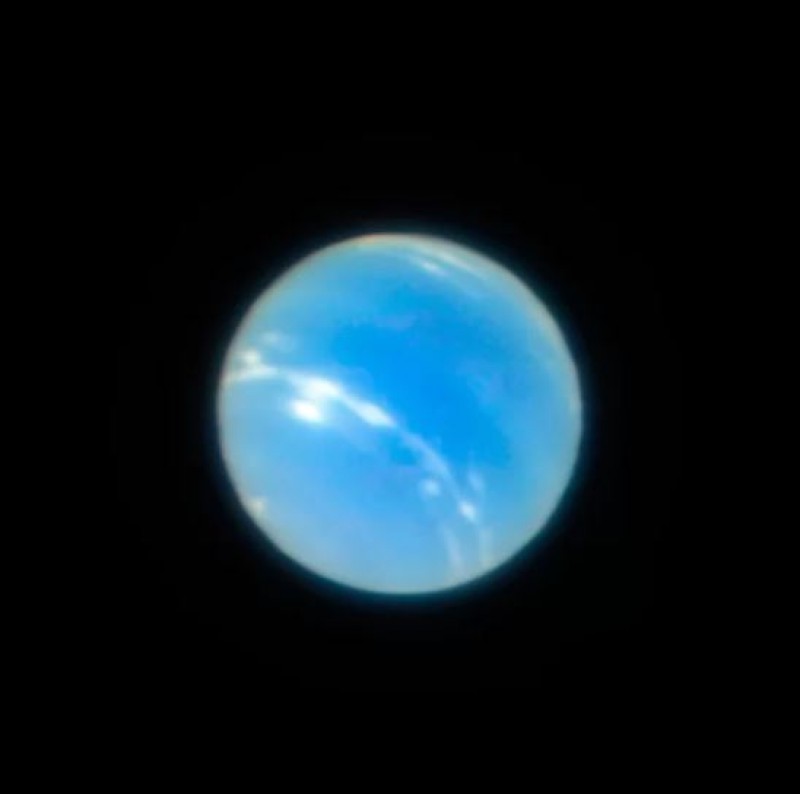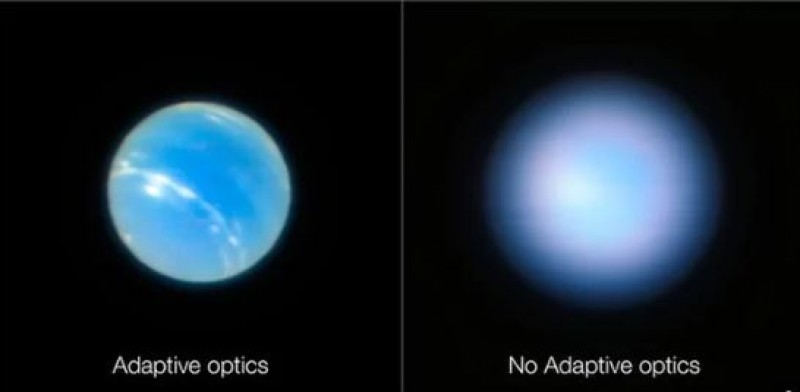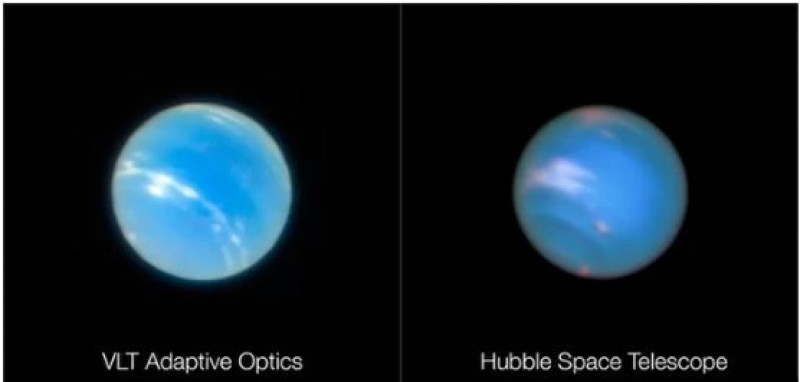Twinkle, twinkle, little star" is a twisted sort of lullaby for astronomers, because the effect that enchants the casual stargazer blurs images taken by even the most powerful telescopes.
Sometimes known as "astronomical seeing," the twinkling or blurring is caused by turbulence in Earth's atmosphere, which muddies a telescope's view. Astronomical seeing is why astronomers flock to mountains, which reach into the atmosphere, and why space telescopes are so valuable.
New photographs released by the European Southern Observatory show how severe the effect can be — and how a technology called adaptive optics can reduce the problem. To compare the different image-quality levels on offer, the photographs all focus on Neptune.
The images come courtesy of the observatory's Very Large Telescope in Chile, which sports a new, adaptive-optics module on one of its telescopes. Adaptive optics produce sharper images by compensating for interference from the atmosphere. To do so, the system tracks a specific star to watch how its light is garbled by the atmosphere. Then it adjusts the viewing system to reverse that blurring effect, producing images that are much less fuzzy.
But astronomers don't want to be limited to observing objects located near stars that can be used for this compensation process. So, rather than rely on natural stars, some adaptive-optics systems use lasers to create their own "stars."
The Very Large Telescope's new system, called Galacsi, runs adaptive optics in just this way, relying on four lasers as "guide stars." The lasers shine bright orange, with each beam stretching about a foot (30 centimeters) across.
The system watches how those lasers change because of atmospheric turbulence and signals the telescope's bendable mirror to recalibrate in precisely the right manner to negate the turbulence. That process repeats about 1,000 times per second, according to the facility.
The system eliminates the effect of more than half a mile (900 meters) of atmosphere immediately above the telescope — as if physically boosting the telescope above the most active part of the atmosphere.
The system compensates so effectively for the atmosphere that the test images taken with the system are about as sharp as photographs from the Hubble Space Telescope — which doesn't have to deal with the phenomenon at all. Instead of displaying Neptune as just a purple-tinged blue blur, as the telescope did before its upgrade, the new images show the colored bands of gas that make up Neptune's atmosphere.
The European Southern Observatory has been making a push on adaptive optics lately and released test images from a second system at the site last week.


